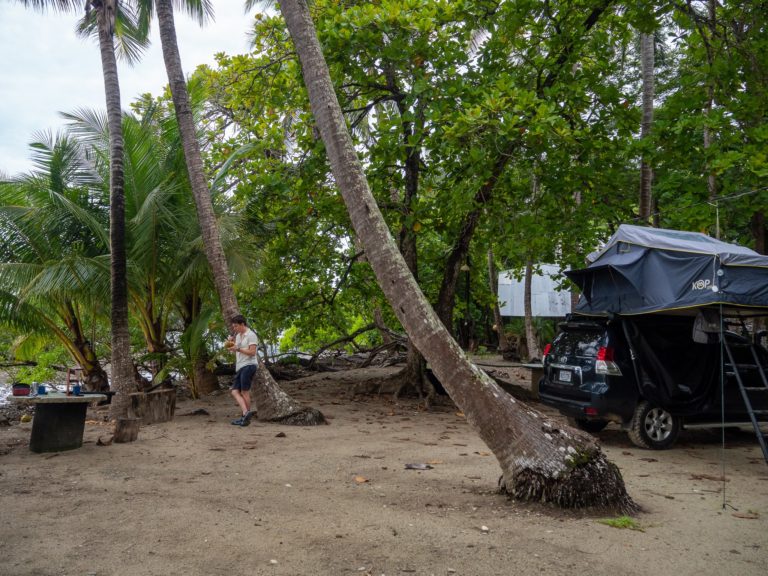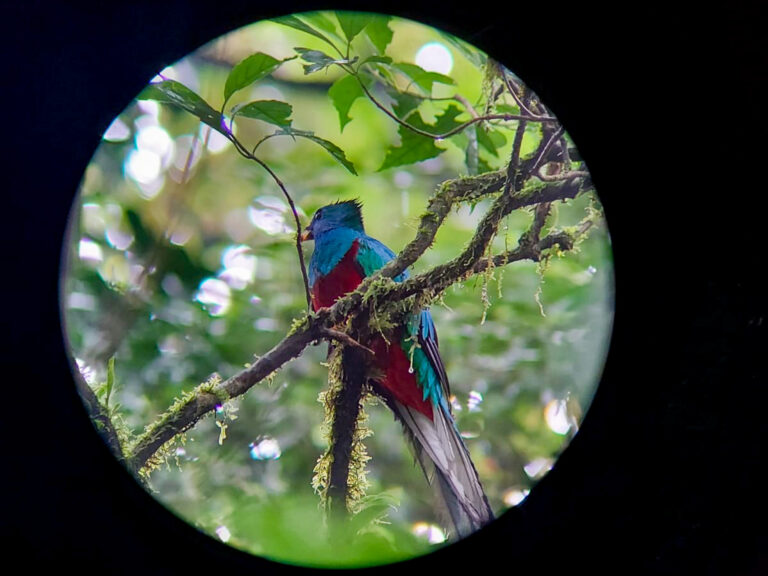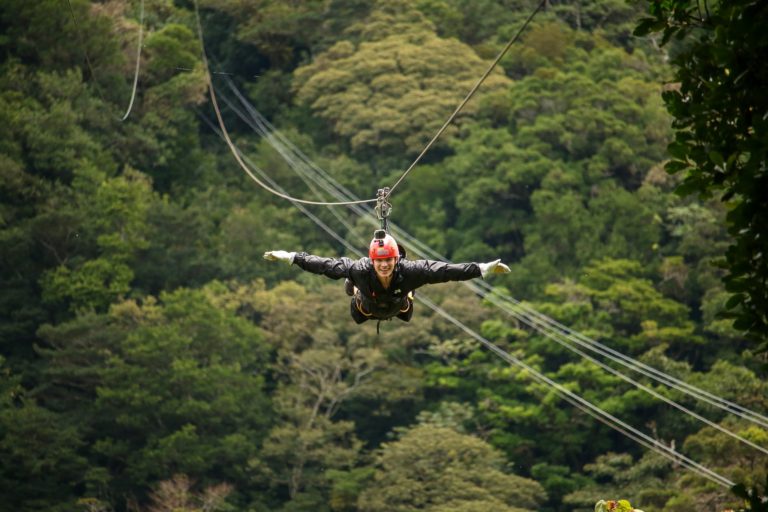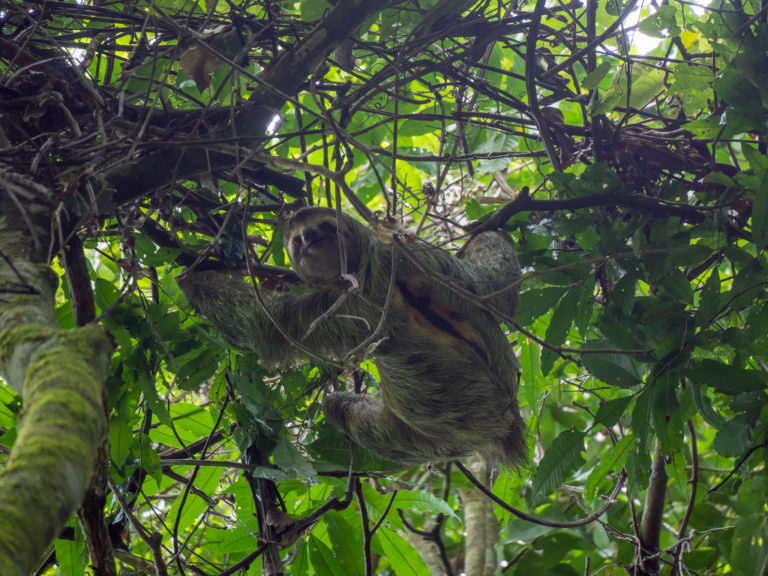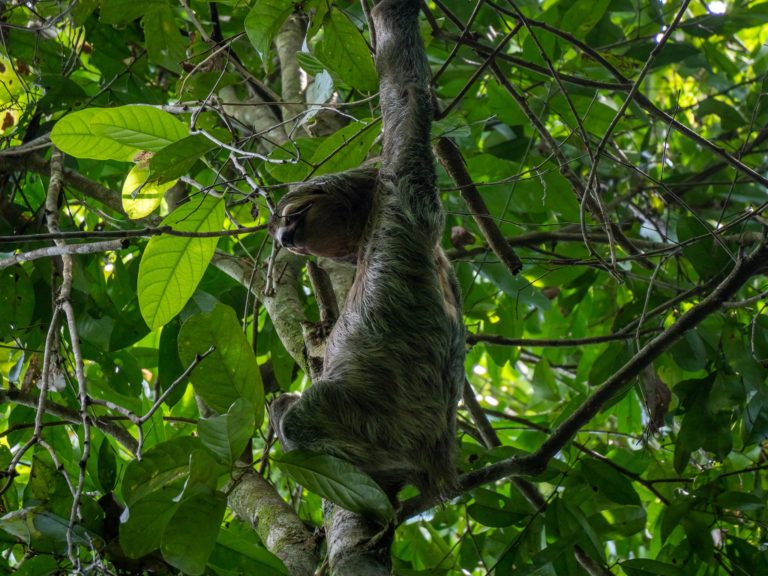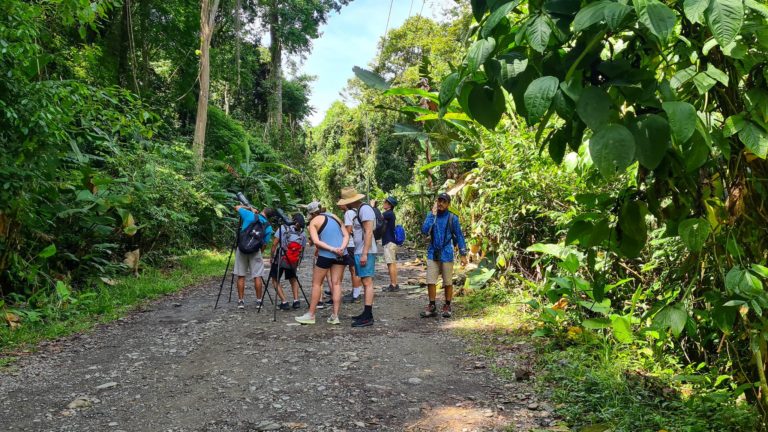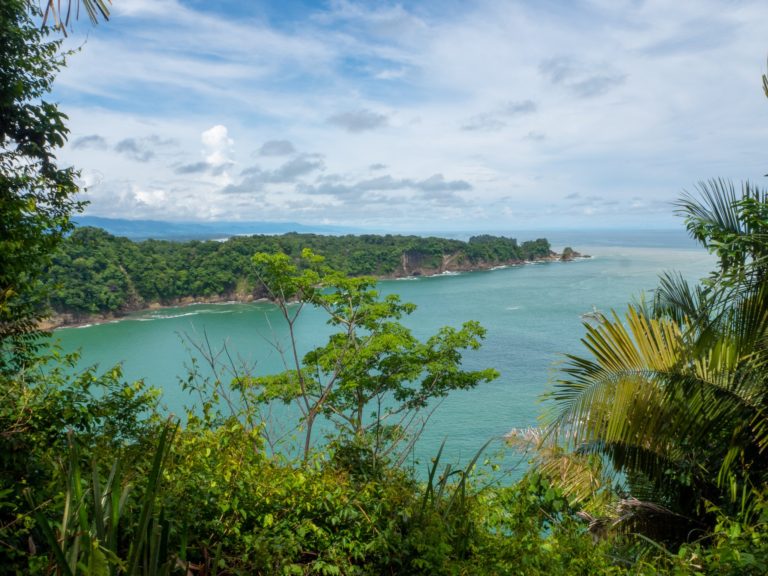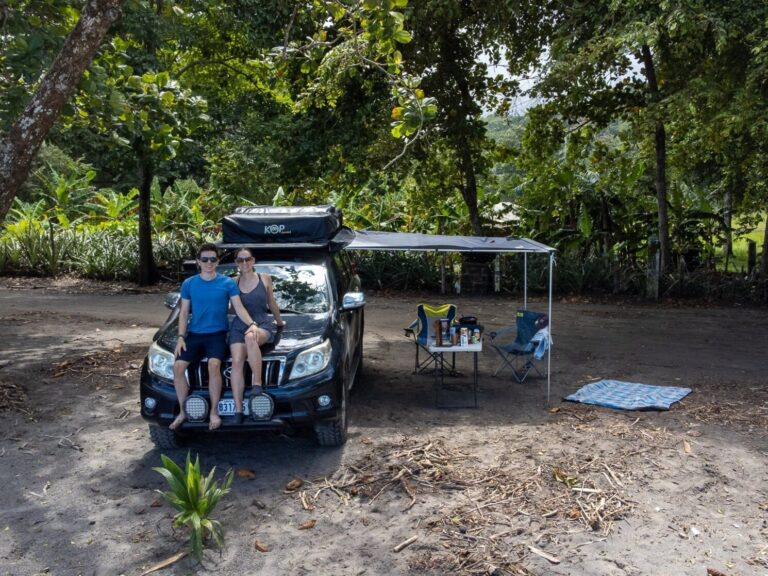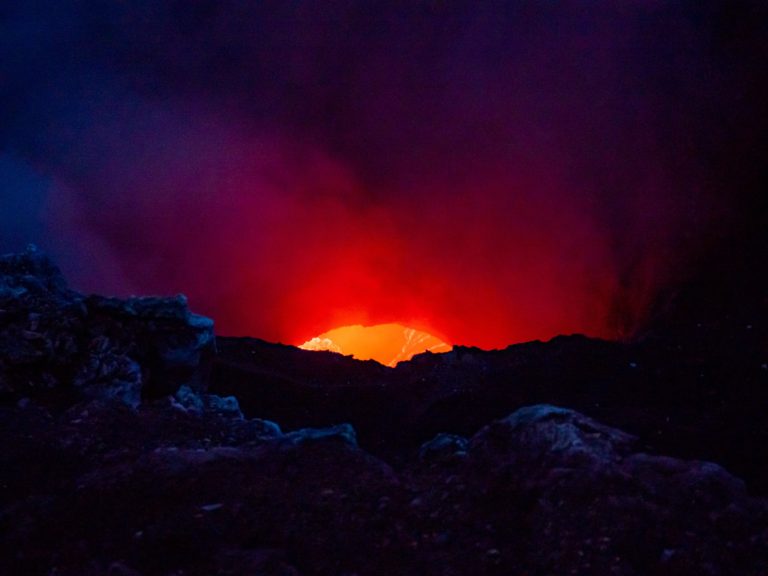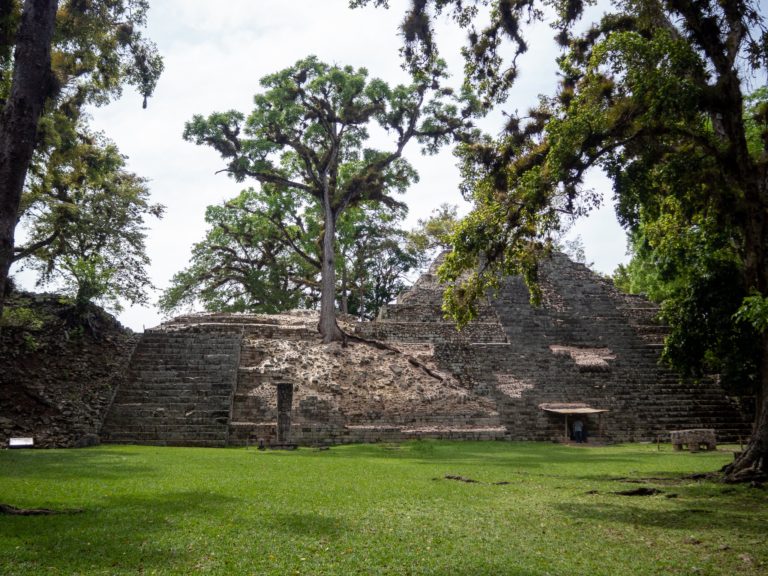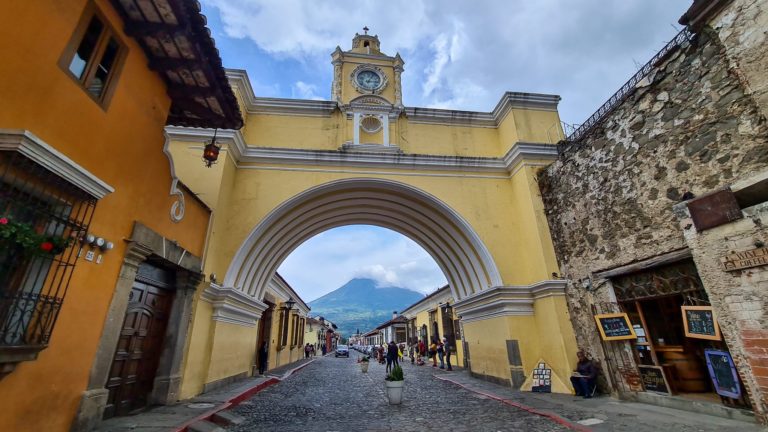Manuel Antonio Scams & Ethical Tourism
Is Manuel Antonio a Tourist Trap or Ethical National Park?
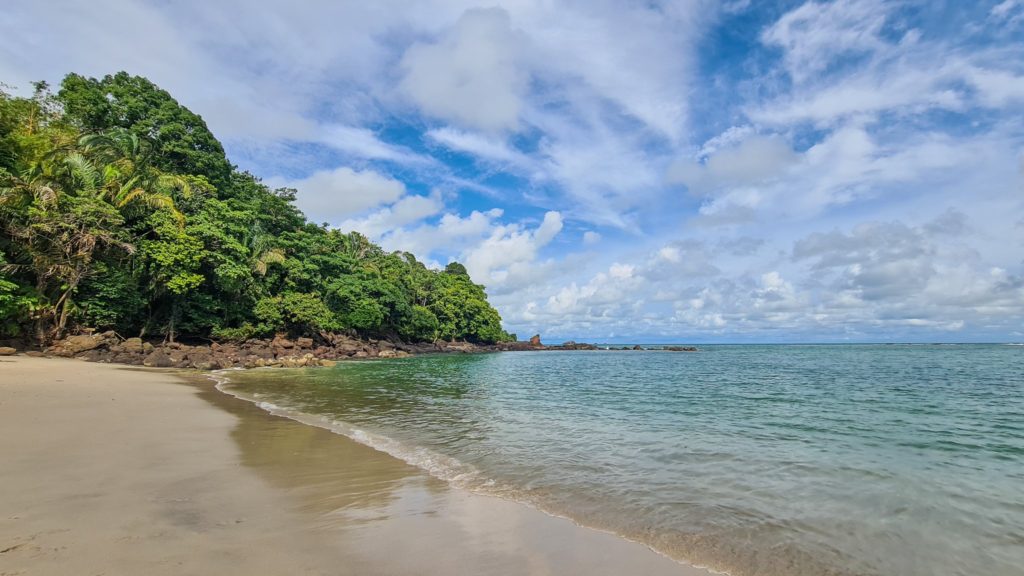
This post may contain affiliate links, which means we might earn a small commission on anything purchased through these links at no extra cost to you. Learn more on our disclaimer page.
Manuel Antonio is the smallest and most popular national park in Costa Rica. With so many tourists adding Manuel Antonio to their Costa Rica bucket lists, there’s an ever-increasing interest in the park. This has led people to liken the national park to an overcrowded theme park, leaving negative reviews online and saying it’s not worth a visit. And with an increase in tourists comes an increase in petty theft and scams that target unsuspecting tourists. This can provoke some ethical questions, including:
- What are the scams in Manuel Antonio to be aware of?
- Is Manuel Antonio safe?
- Can such a tiny town withstand such a footfall of traffic?
- Are the animals protected from the impacts of tourism?
- Is Manuel Antonio even worth it?
We’re going to answer these questions in this article, as well as delve into whether Manuel Antonio really is too touristy, what the scams you need to be aware of are, and whether the wildlife is truly protected.
Time needed: 2 to 2 days.
Tickets: $18.08 USD for adults, $5.65 USD for children.
How: Buy tickets online, in advance via SINAC or book onto a Manuel Antonio Tour.
When: The first time slot in the morning at 7:00.
Weather: Dry and sunny between December to April, afternoon showers frequent between May to November. Average highs of 30°C (86 °F) with a tropical and humid climate.
Language: Spanish.
Currency: Costa Rican Colones (CRC).
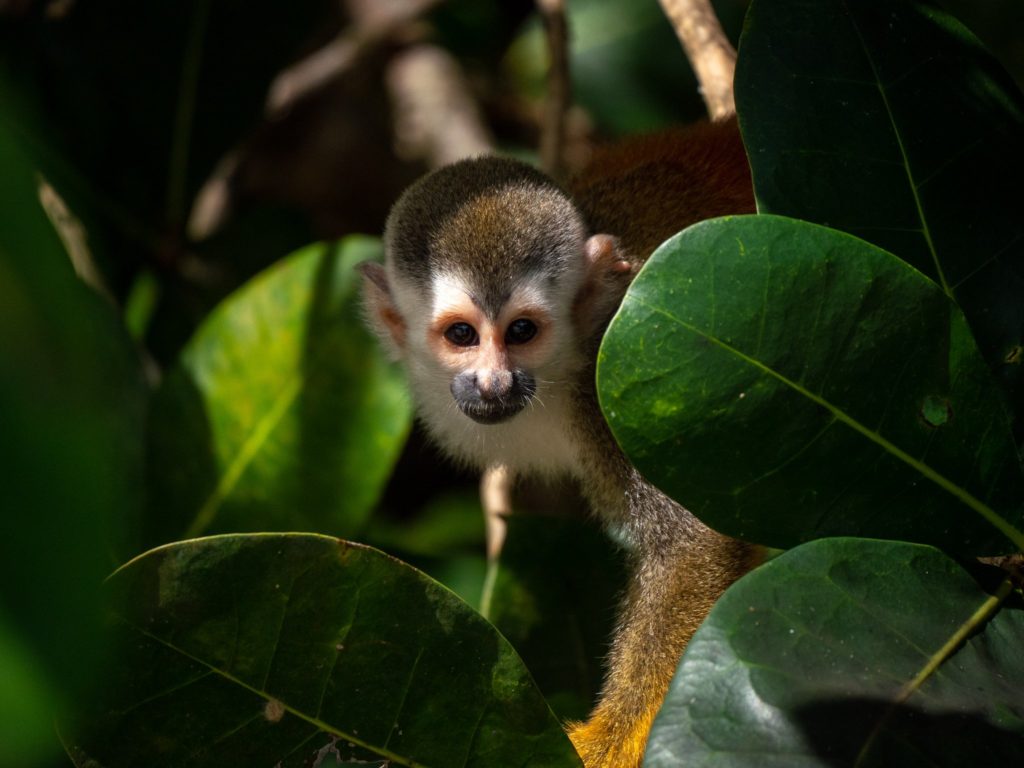
Manuel Antonio Vs Manuel Antonio National Park
Firstly, it’s important to distinguish that Manuel Antonio National Park and Manuel Antonio are two separate locations – one is the smallest and most popular national park in Costa Rica, while the other is the town where the park is located. Many people conflate the two, using the names interchangeably to refer to either the national park or downtown.
Manuel Antonio town is home to sweeping beaches, beachside cafés, local restaurants and boutique accommodations, as well as the national park. It also has immediate access to some great day trip destinations as it is surrounded by lush jungle, unique waterfalls and, of course, lots of wildlife.
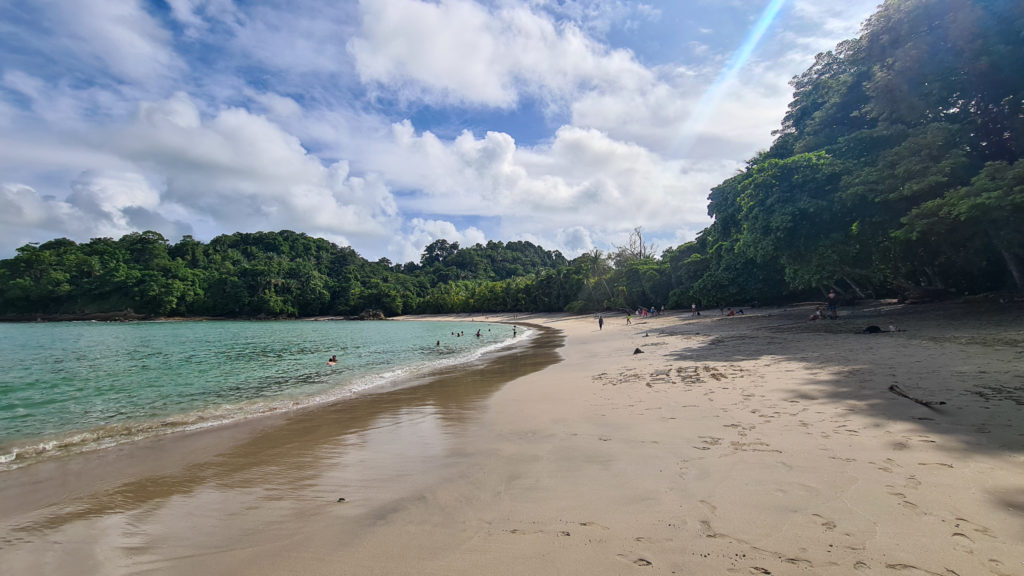
Why is Manuel Antonio National Park so popular?
Manuel Antonio National Park was established in 1972, after campaigning from the local community, as a way to protect the rainforest and unique indigenous species within. There were concerns that overdevelopment would lead to destruction of the rainforest and its wildlife, so a dedicated protected area was set up. This has allowed the animals and habitat within to flourish, making Manuel Antonio National Park one of the best places to see wildlife in Costa Rica. But, as the park becomes ever more popular, questions still remain about the impacts tourism is having on the local wildlife and their habitats.
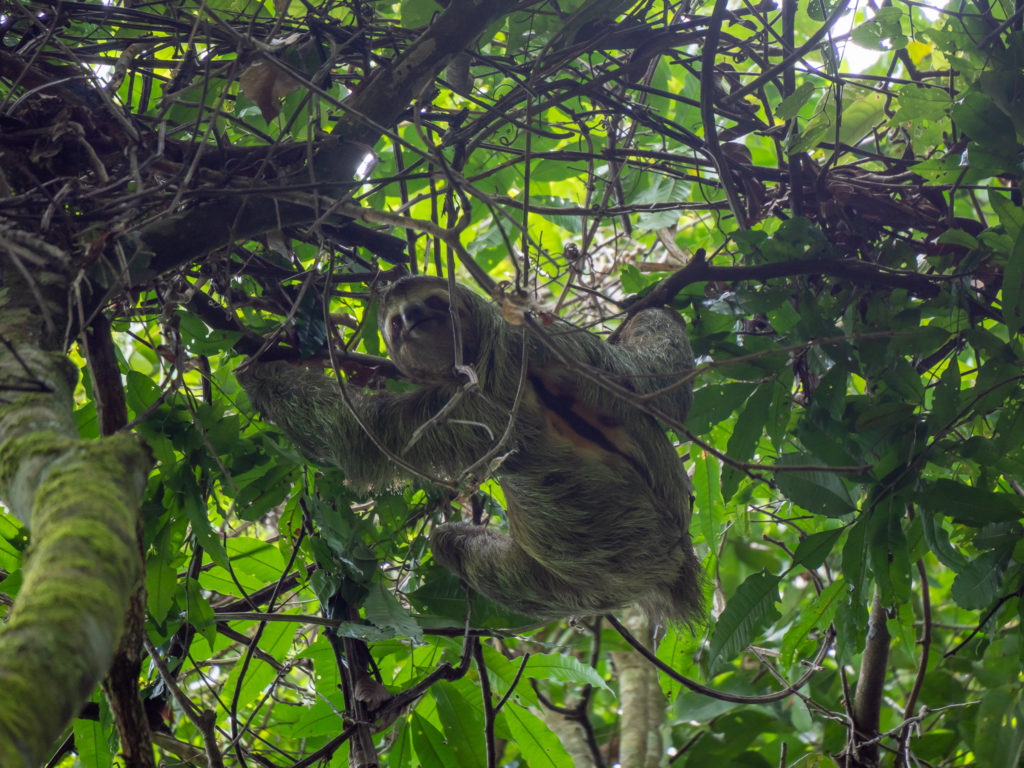
How touristy is Manuel Antonio?
As the most popular national park in Costa Rica, it’s fair to say Manuel Antonio is also one of the most touristy. It’s difficult to find an official figure of how many people visit Manuel Antonio. A common answer states that around 150,000 tourists visit Manuel Antonio every year. But the national park’s website claims 465,000 people visited in 2017. With tourism returning to its pre-COVID boom, we’d expect to see a similar interest in the subsequent years.
In previous years, the number of visitors allowed into the park each day was 3000. In 2023, this number was reduced to 1120 people per day, less than half the previous daily number of visitors. This means capacity is now limited to a maximum of 349,440 visitors a year.
At just 16 square kilometres (683 hectares), Manuel Antonio is also the smallest of Costa Rica’s many national parks, which does create some concern for how such a small area can accommodate such a high footfall of traffic. However, despite being so popular, Manuel Antonio is still fairly rural. Sure, it’s one of the more commercialised areas in Costa Rica, but you won’t find any chain hotels or internationally owned restaurants here.
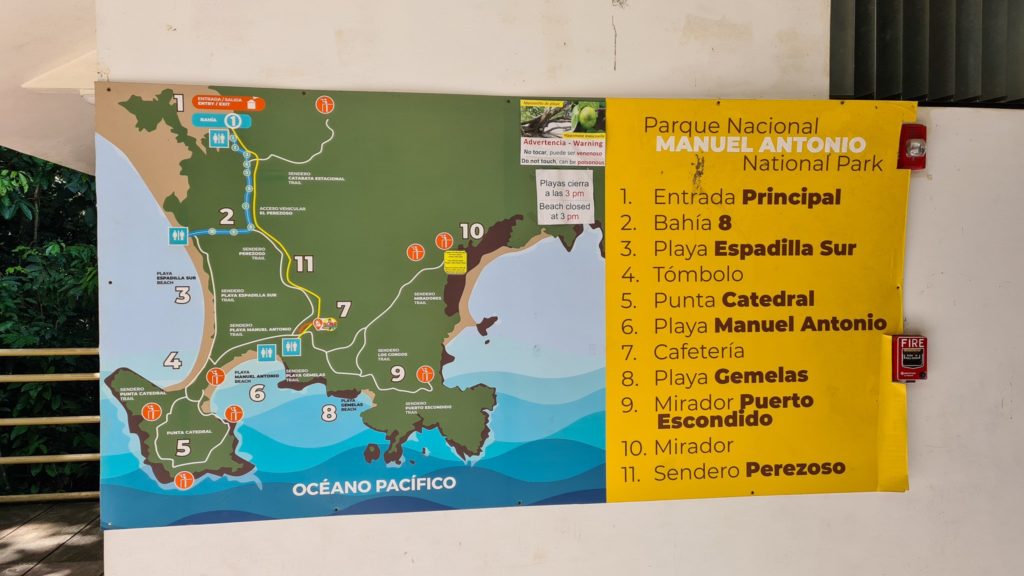
Is Manuel Antonio busy?
We’d heard stories and read reviews before our visit which likened the national park to a theme park. Many tourists said their visit was busy and that Manuel Antonio National Park was crowded. However, this wasn’t the experience we had, and we’re going to explain why.
There are 3 factors that influence your perception of how busy the park is:
- The time of year you visit
- The time of day you go
- Where you go in the park
Peak season in Costa Rica runs between December and April. This is when most international visitors take advantage of the nice weather and visit Manuel Antonio. As a result, the park is busier during this period.
As with any major attraction, the times closest to the opening and closing of the park are the quietest. If you can make the effort to get up early, or stay until the end of the day, you’ll likely be rewarded with fewer crowds.
Manuel Antonio may be a small area, but it has 11 different trails you can hike. Most tourists only do the main paths and don’t venture to the edges of the park. The further in you go and the more you explore, the fewer people you’ll come across.
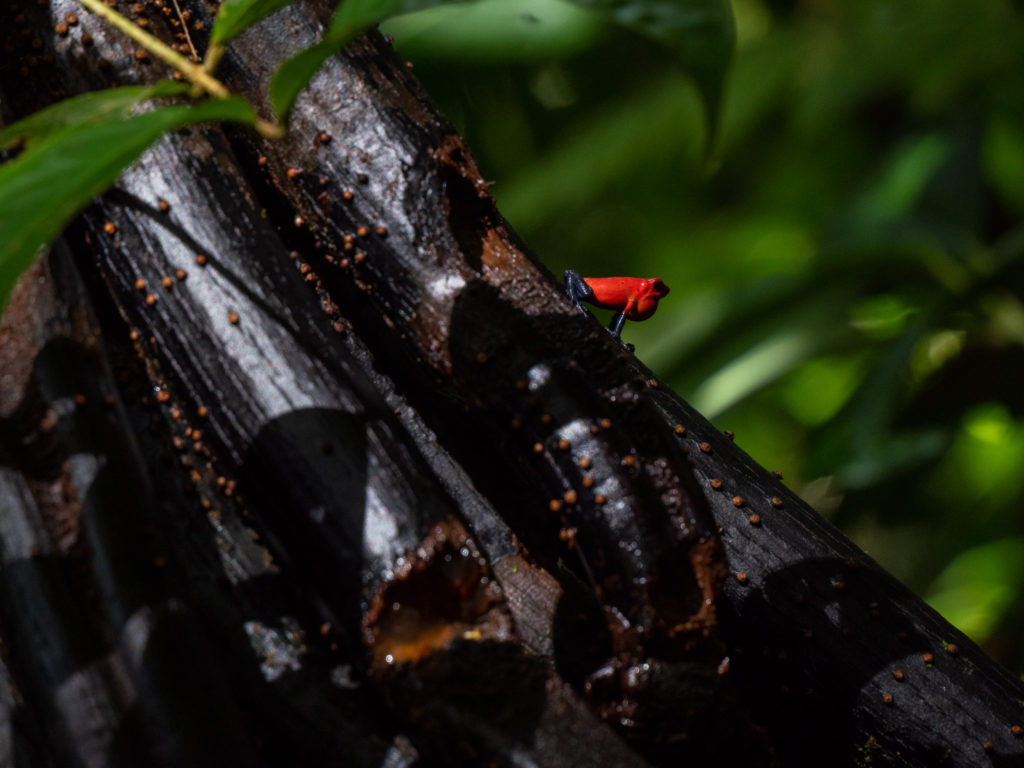
Another point worth mentioning is that guided tours can also give a sense of business, as groups of people congregate on the paths and walk much more slowly as they listen to their guide’s commentary. If you’re keen to get away from people, it might be worth doing a self-guided tour on your own.
We visited Manuel Antonio in June, booked the first time slot of the day, spent the whole day in the park and walked every single trail. We saw so much wildlife (more species than we’d heard others report they saw in one day) and found ourselves alone on most of the paths we took. We’d highly recommend visiting off-peak.
Read next: Do you need a guide for Manuel Antonio National Park?
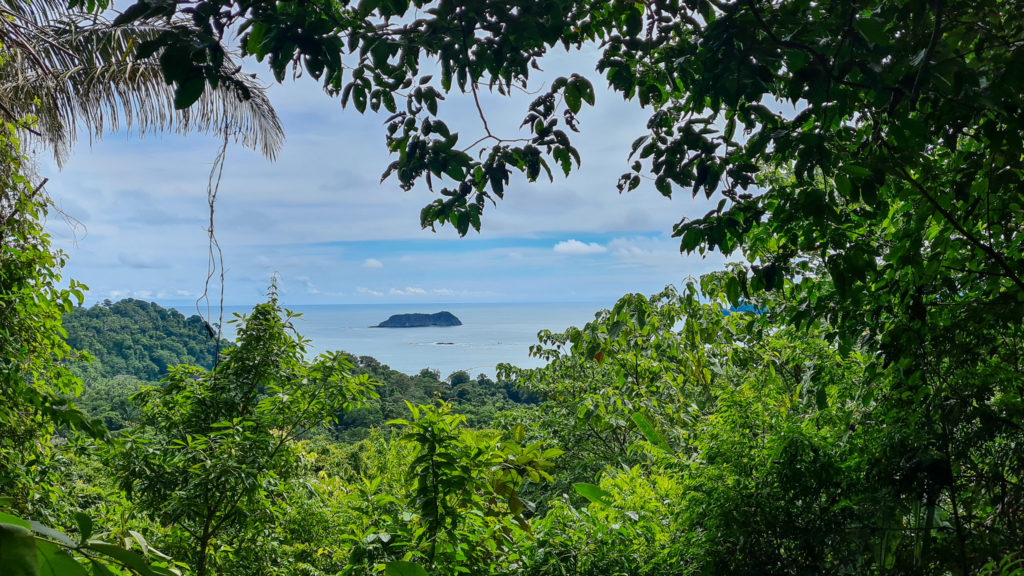
Common scams in Manuel Antonio
The first thing you need to know about Manuel Antonio is that there are unfortunately scams everywhere. The problem is so persistent that the official website actually has a notice to warn tourists they may encounter scams on their way to the park. This is something a lot of websites gloss over but, if you’re not prepared, it could completely ruin your trip. We’ve listed the common Costa Rica tourist scams and what to look out for below.
On most days, you can’t even drive into Manuel Antonio without people standing in the road trying to flag you down. These people will try to stop you as you drive closer, waving you into independently owned car parks or trying to sell you unofficial tickets. They even go as far as to wear fluorescent jackets and blow a whistle at you. It can be a little intimidating but the best thing to do is to just keep driving past them. If you have to engage with them, just politely let them know you’ve already bought your ticket or know where you’re parking further down the road. Another tip is to say you’re not going to the national park at all and are instead heading to Manuel Antonio Beach, or one of the hotels or restaurants in town.
This behaviour is a consequence of growing tourism in the area. There is more opportunity for people to take advantage of non-locals who have no knowledge of the area or a limited understanding of Spanish. There is also nothing to discourage these people from posing as officials and trying to make money off tourists. You’d think the government would want to crack down on it as it encourages more people to visit the area and put money into the local economy. But there are currently no regulations to prohibit it and no enforcement to discourage it.

Ticketing scams in Manuel Antonio
Entrance tickets for the national park can only be bought through the official website, online and in advance (unless you book with a licensed tour company). They cannot be bought on the door or outside the park. But you’ll likely encounter multiple people in the town and outside the park entrance trying to sell you entrance tickets. These tickets are either being resold at inflated prices or are completely fake.
As we mentioned, the number of daily visitors to the national park has reduced. This capacity limit has led to a coordinated operation where local people and organisations are quickly snapping up entrance tickets in order to re-sell them at extortionate prices to tourists. Those who are underprepared or don’t manage to get tickets for their preferred day are often left with no choice but to buy these expensive tickets
There are several reasons not to buy tickets from touts. Firstly, paying them money for second-hand tickets only supports the practice and encourages these organisations to continue. Secondly, it’s highly possible that the ticket is a fake and you’ll be left out of pocket. Even if the ticket is official, because it’s not been assigned to you during the purchasing process, it’s likely to still be invalid at the entrance. This is because you need to register your passport number when checking out. You also need to show proof of identification with your ticket when you arrive at the entrance.
Read next: Visiting Manuel Antonio National Park: Everything You Need to Know
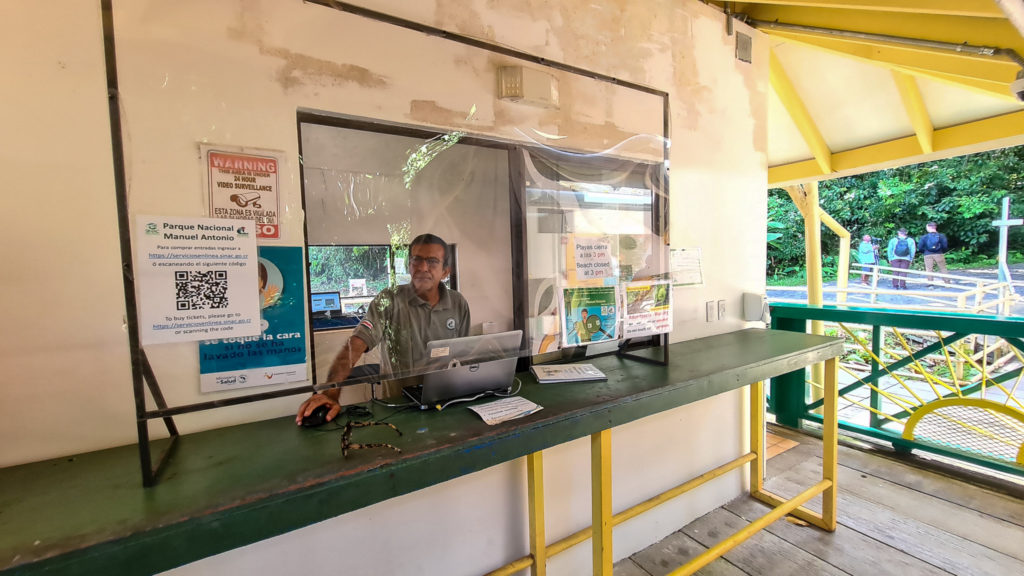
Guided Tour scams in Manuel Antonio
Likewise, there are often people hanging around the entrance claiming to be professional wildlife guides and offering you guided tours within the park. These people however have no affiliation with the park and might not even be guides at all.
Taking a guided tour can be a great way to support a local professional as your money is going into the local economy. But guided tours should be booked in advance. You can book tours directly with Manuel Antonio National Park through the National System of Conservation Areas (SINAC). Alternatively, you can book ahead with a local company like Jade Tours Costa Rica, who hold a license to run tours in the park.
The people offering guided tours outside the entrance are unofficial, but it can be very tricky to know that. They’ll often be wearing a costume that looks just like the official national park uniform. SINAC officials are only found inside the park, wearing the SINAC official uniform – it can be identified by the Costa Rica flag on the right shoulder and SINAC logo on the left shoulder, with the Conservation Area logo on the left chest. All official guides will also be carrying a guide ID which says they are ICT certified. You’re allowed to ask for this and check it.
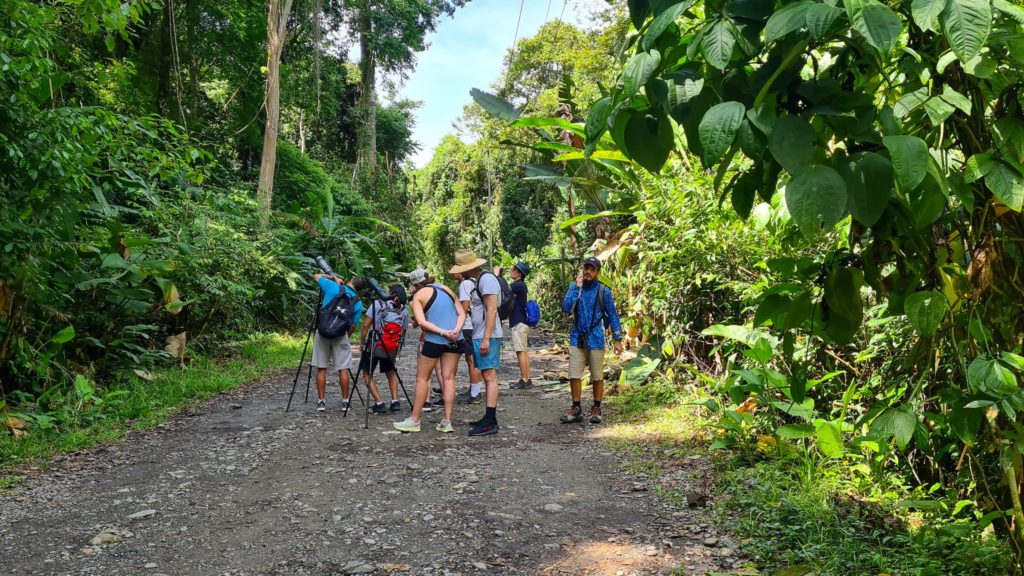
Parking scams in Manuel Antonio
There is no official parking for Manuel Antonio National Park. But you’ll likely pass people trying to wave you into their parking lot on your way into the town. The problem here is that each owner can charge whatever they like and this rate is often double what you should be paying to park in town.
It’s also worth noting that you can park on certain streets for free. Many tourists don’t feel comfortable choosing this option due to the risk of petty crime, which we’ll talk about in a bit. So the only option left is to choose a private car park.
Many of the parking lots are branded as ‘official’ but they’re not. They’re run independently, which makes it hard to choose between them. You should never pay more than ₡4000-₡5000 Costa Rican Colónes for parking at Manuel Antonio. Always be sure to ask the price for the time you intend to stay before driving into the parking lot. We used the car park closest to the park entrance, on the right-hand side. It was ₡4000 Costa Rican Colónes (~£5 / $7.50 USD) for the day. We also got a little slip of paper as proof we’d paid. Although this doesn’t mean anything as the parking lots aren’t official anyway, it gave us a sense of security that they wouldn’t try to extort more money from us when we returned to the car.
Using a dedicated car park with an attendant definitely gives you peace of mind as it minimises the risk of a break-in or vandalism while you’re away. They’re also closer to the park entrance than street parking in the town. However, it does mean you’re unfortunately supporting unregulated practices which have arisen as a result of tourism.
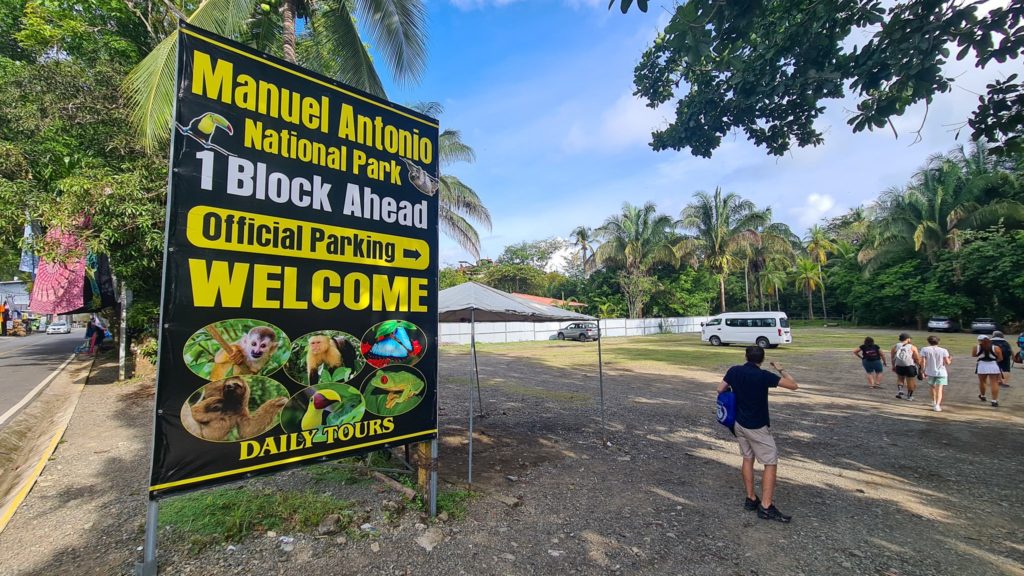
Petty theft in Manuel Antonio
As with any popular tourist destination (think Rome), a rise in tourism often correlates with a rise in petty crime. It’s highly unwise to leave valuables in your car and there have been reports of break-ins when cars have been left unattended or parked on the side of the road. It’s also a good idea when travelling to always keep valuables out of sight. This includes in your car and on your person – maybe leave that $10,000 Rolex in the hotel safe, or even better, at home. Watch your pockets, especially when in large crowds. It’s also a good idea to have some emergency cash in a secret place on your person. If you find yourself in an emergency situation, the Costa Rica emergency number is 911.
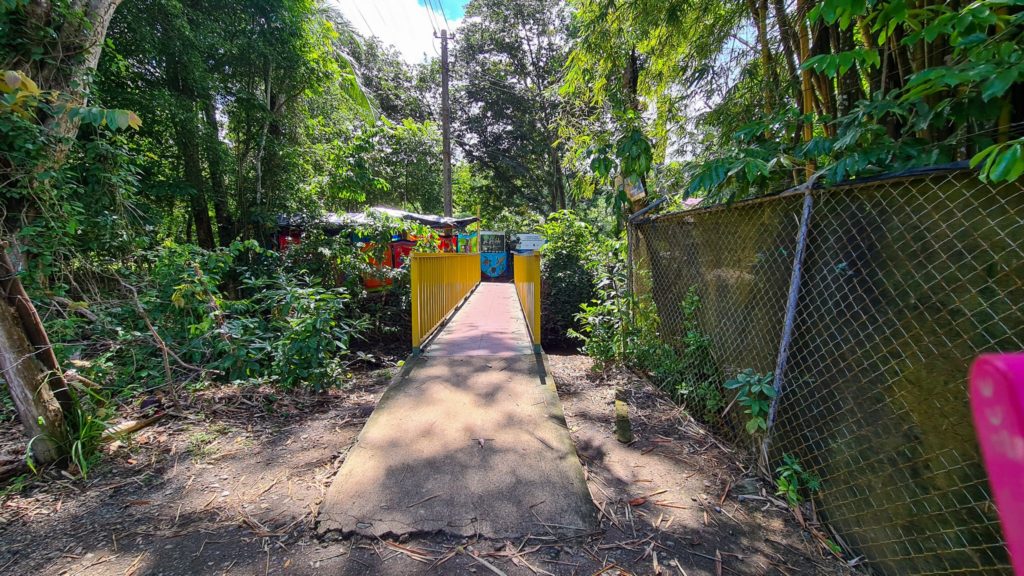
Pricing scams in Manuel Antonio
There are a few things to be aware of when it comes to paying money, whether in a shop or restaurant. It’s possible, if you’re not aware of what’s going on, that you could be taken advantage of. Always ask the price of something before you agree to purchase it.
Be careful if you’re paying in USD too. While dollars are widely accepted in Costa Rica, the local currency is still colónes. Double check which currency the thing you’d like to purchase is priced in, and which currency you’re paying in. It’s also a good idea to have knowledge of the exchange rate so you don’t get ripped off.
Finally, we’d recommend always getting travel insurance! This provides you with extra protection when you travel for a variety of possibilities. At the end of the day, it’s better to be prepared – and buying travel insurance could be a lot cheaper in the long run than being caught out by a scam.
A few of our favourite travel insurance companies are:
- SafetyWing – The best travel insurance for digital nomads
- World Nomads – The best travel insurance for backpackers
- True Traveller – The best travel insurance for annual multi-trips
- Go Walkabout – The best travel insurance for working holidays and UK residents
Read next: The 6 Best Travel Insurance Companies for Every Kind of Trip
Is it safe to walk around Manuel Antonio?
This might all sound terrifying and you might be thinking, with all these scams to be aware of, that Manuel Antonio is a super dodgy place. But it’s actually totally safe for travellers. Costa Rica is one of the safest countries in Central America. Violent crime rarely involves tourists, who are more likely to be victims of petty theft and scams. Manuel Antonio town is full of hotels, restaurants and beach bars and is safe to walk around. As with any destination, you should stay alert and take basic security precautions. But, if you’re aware of the common tourist scams and sensible with your belongings, you’ll likely have no issues whatsoever.
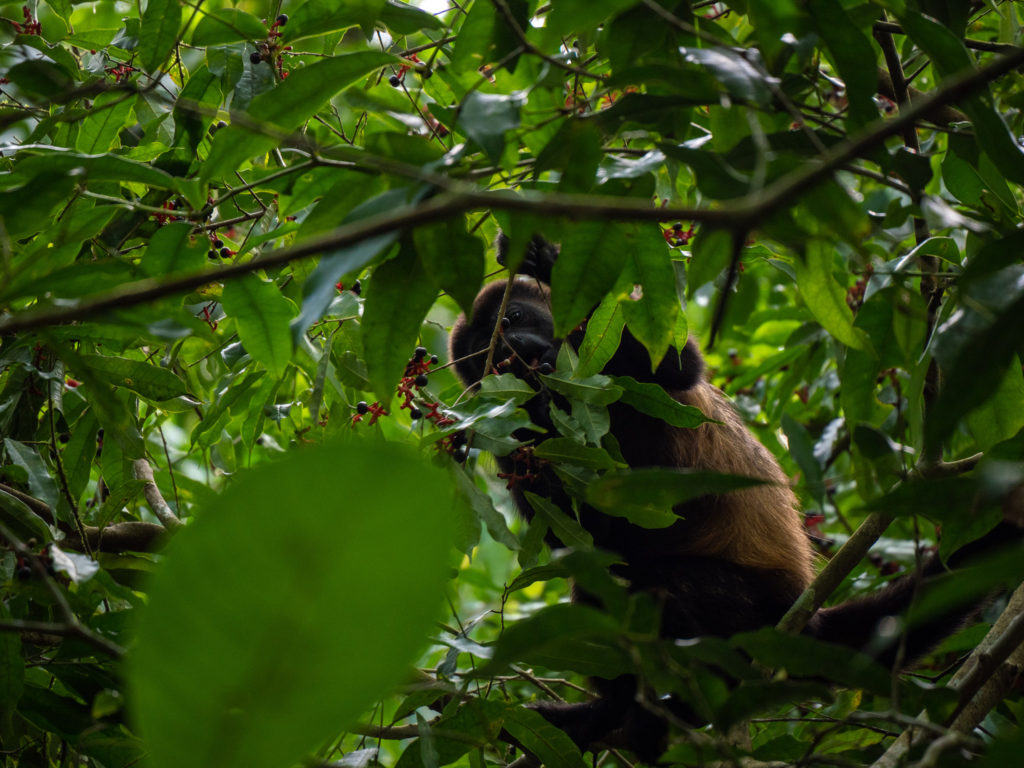
Ethical wildlife tourism at Manuel Antonio
One of the most important elements to consider when researching a trip to Manuel Antonio is not just the logistical information (including pitfalls like scams to look out for) but also the potential impact on the local wildlife. We’re keen advocates for ethical wildlife encounters so it’s super important to us to know before we go somewhere that our visit won’t have any negative impact on indigenous animals. With the rumours Manuel Antonio National Park is super touristy, we were worried that a high number of visitors might have adverse effects on the flora and fauna within.
Manuel Antonio is one of the most popular national parks in Costa Rica. With a high annual footfall, the animals within it are exposed to a lot more human activity than they naturally would be elsewhere. This can have really negative impacts on the species, including stress, illness, injury, loss of habitat, interrupted feeding patterns and disturbed sleeping patterns.
We were actually pleased to see that all visitors seemed very respectful of the wildlife. The animals in the park seem to be able to mostly live their lives uninterrupted.
Read next: Let’s Talk About Ethical Wildlife Tourism
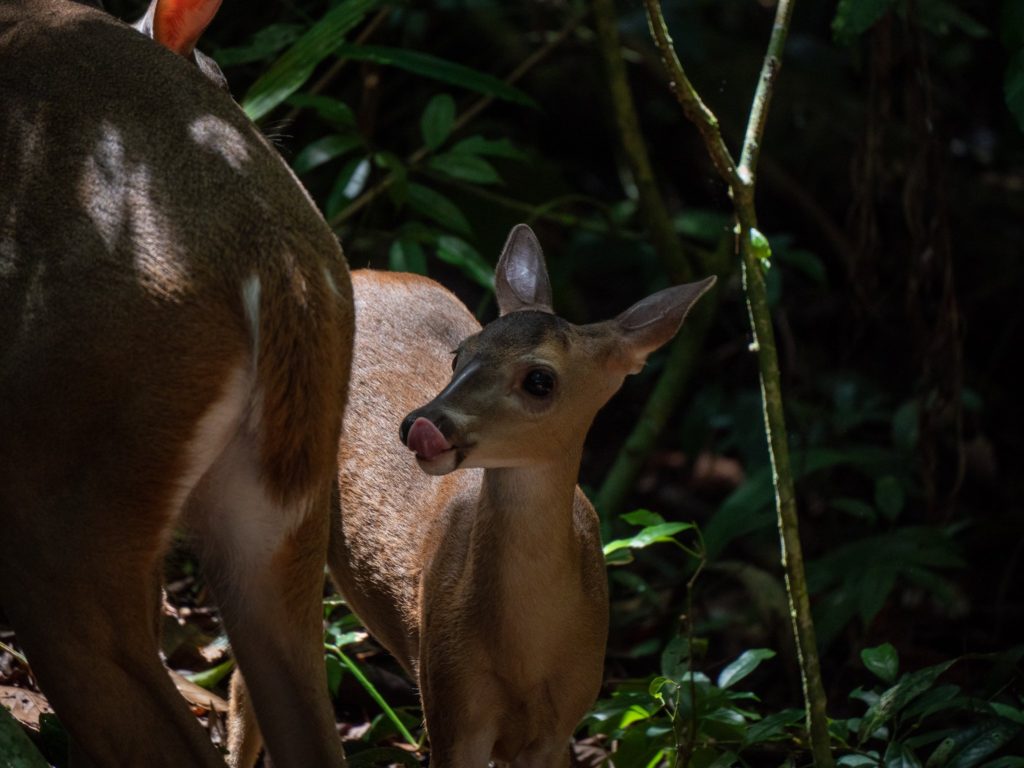
Restrictions to protect wildlife at Manuel Antonio
When researching, we found that there are quite a few rules in place to protect the wildlife in the national park. Here are some of the restrictions you need to know before you go, and why they’re important for conserving the wildlife within Manuel Antonio National Park:
- No pets are allowed in the park
Native animals are often vulnerable to diseases that domestic animals like dogs and cats can carry. Dogs particularly are a predatory species and can display threatening behaviour towards local wildlife, which can result in stress and even physical harm if they get too close. Having said that, service dogs are allowed with a permit which can be obtained at the guard station.
- No drones are allowed in the park
There is quite extensive scientific evidence that shows drones can have a hugely negative impact on wildlife. Flying drones too close to animals can result in stress, or cause the animal to try to escape the area, putting it at physical risk. Furthermore, a lot of drone users aren’t familiar with local laws and therefore don’t adhere to rules like designated distances. It is illegal to fly a drone in conservation areas, including all national parks, in Costa Rica.
- No food can be taken into the park
Not allowing food into the park is important to keep the impact on the environment and wildlife as low as possible. Many species (monkeys in particular) are notorious for trying to steal food from tourists. While this might be a funny sight to see, it can actually be quite harmful. Animals have different digestive systems and nutritional needs to humans so eating our food can make them ill. Also, the human race doesn’t have a great reputation for looking after natural areas and littering can be a huge problem for animals and plant life. There is however a café area where you can buy and eat food, ensuring that the risks of animals being in contact with human food and packaging are considerably reduced to one small area.
- No single-use plastics are allowed in the park
Plastic is a killer for wildlife. Littered plastic can result in digestive consumption, entanglement and toxic poisoning for wild animals. As a result, it is banned from Costa Rica’s national parks. Drinks including water are allowed in the park, provided they are in a reusable bottle. This is because no single-use plastics are allowed inside the park – another rule that helps to protect animals from the threats of plastic pollution. There are also plenty of water refill stations situated around the park so you can fill your bottle up.
Read next: Let’s Talk About The Plastic Problem
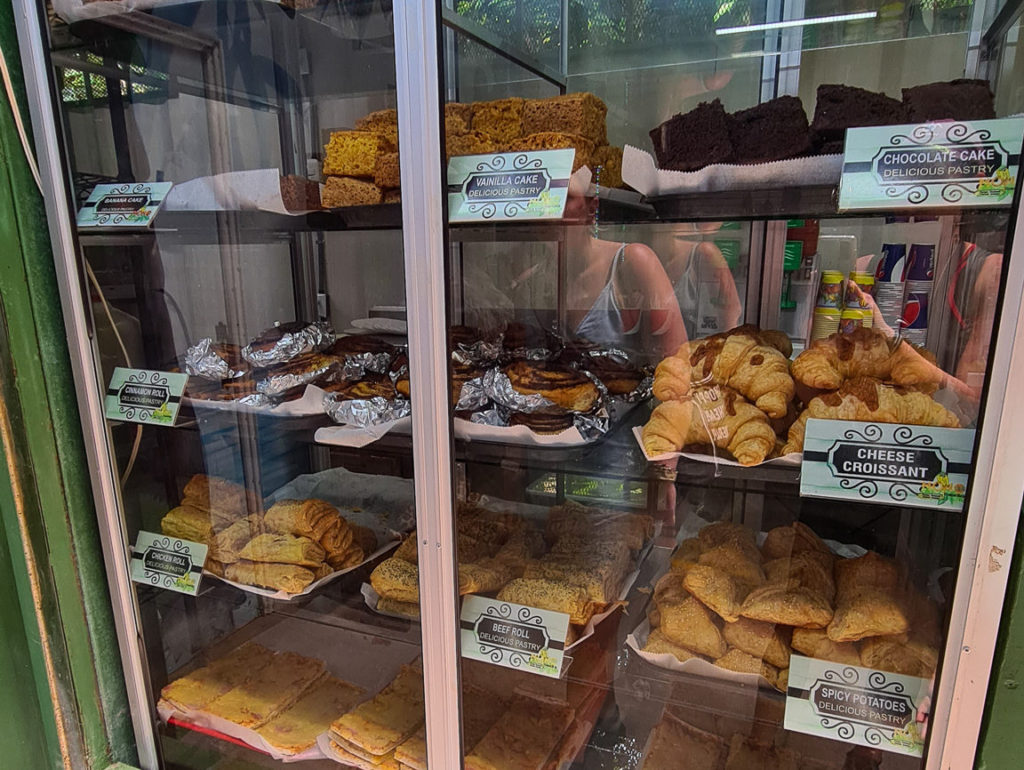
What does unethical wildlife tourism look like?
Wildlife tourism is one of the most popular forms of tourism, with many tourists travelling internationally purely for an experience that involves a wild animal. Unfortunately, when these encounters are handled poorly, many of these animals suffer for tourist entertainment. This is known as unethical wildlife tourism, which can present itself in many forms. Some of the key indicators of unethical wildlife tourism include:
- Animals being held in captivity for purposes other than rehabilitation and release
- Animals being fed
- Animals being touched or held
- Animals being followed, chased or harassed
- Animals being disturbed
Fortunately, none of these issues are present in Manuel Antonio. Costa Rica really prioritises animal welfare and this is also reflected in all the restrictions and conditions of entry to the national park too. There are a lot of rules in place to protect the animals in Manuel Antonio National Park from the impacts of tourism.
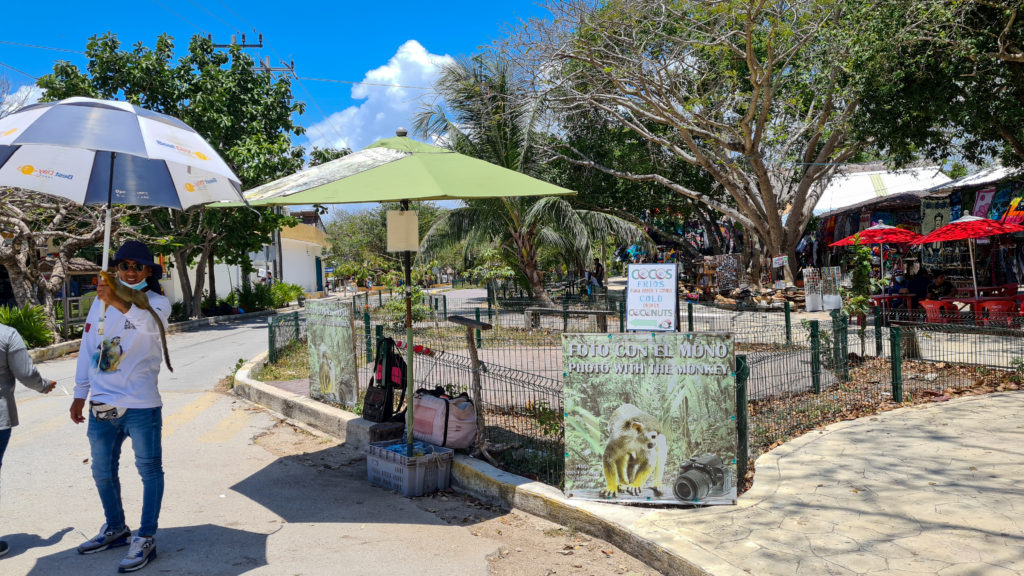
But there is one element that we noticed during our visit that could do with a little more attention. Unfortunately, the monkeys in the park have learned that the café area offers an easy source of food. They congregate in the trees around this area and steal anything they can get from unsuspecting tourists.
This is an issue as human food can be really harmful to animals. Most species have specialised nutritional needs. Eating processed foods can lead to digestive issues or to the animal becoming malnourished. Furthermore, an unnatural source of food can lead to animals losing the ability to provide for themselves – skills necessary for their survival and that they need to pass down the generations. It can also cause the animals to associate humans with food. They might lose their fear of humans, which can lead to harm or accidents.
A second issue arises due to the reaction to this behaviour. Most visitors seemed to find the monkeys coming close and stealing food as amusing and entertaining. They see the behaviour as cheeky but harmless. This can encourage tourists to get closer to take pictures and videos. Monkeys can easily become aggressive and territorial, which could lead to injury if you get too close. Being too close to animal can also cause it stress or cause it to flee.
During our visit, we saw capuchins steal someone’s lunch box, open it and empty the contents. We also saw a couple steal a cinnamon bun, which they then proceeded to eat, which can’t have been very healthy for them.
It’s a tricky situation. No food is allowed in the park but visitors still need to be able to eat. It’s unreasonable to expect tourists to go a whole day without food, and containing food to one area of the park is actually a great way to minimise the impact of human food (and the littering of packaging) in the park. While we didn’t see anyone actually feed the animals (which is not allowed), there didn’t seem to be a very good understanding amongst visitors of the animals’ needs either. Visitors need to be more educated on how to behave around wild animals, (i.e. not getting too close) or the park needs to take further steps to discourage the animals from stealing food from the café area.
In 2023, the café was closed. This hopefully gave the animals a nice break from the situation we’ve just described. The café is now operating as usual.
The animals at Manuel Antonio National Park are wild so there’s no easy way to control what they do. But you can control your own behaviour. Don’t encourage the monkeys to come closer to you when you’re eating. Try to keep your food away from them and be aware of where they are when you’re at the café.
We’d recommend keeping a respectful distance from wildlife at all times. Binoculars are a great way to still see animals up close, without disturbing them. We use the Nikon Prostaff 3S 10×42 Waterproof Binoculars with a 7° field of view (Browse UK | Browse US).
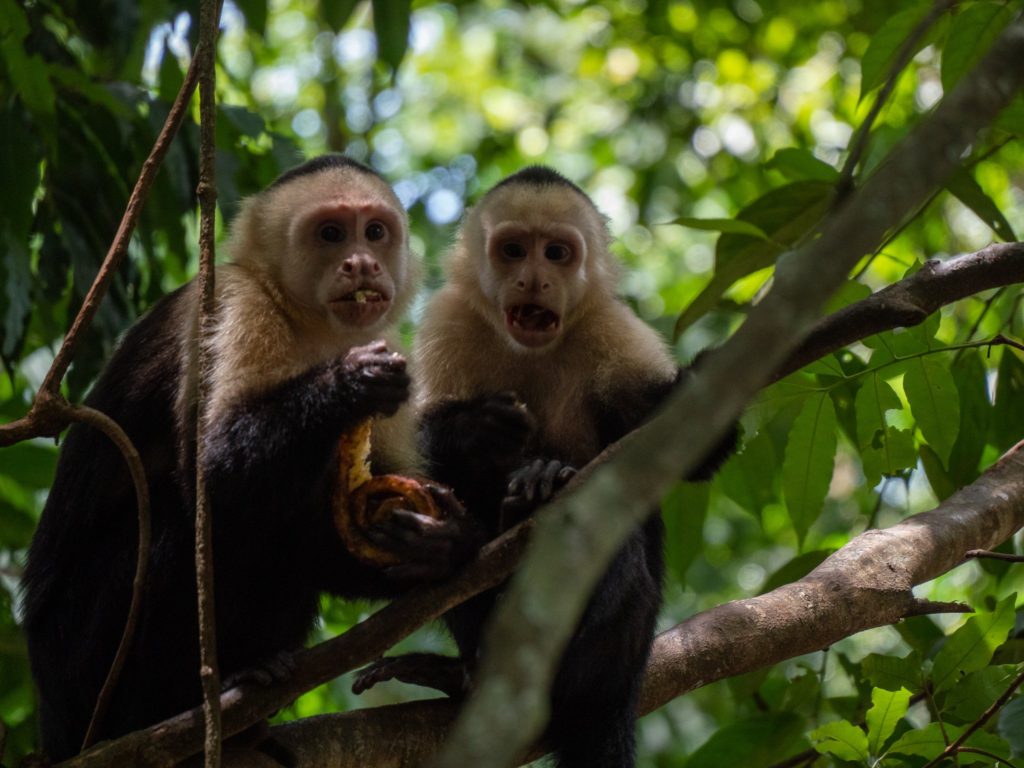
Is Manuel Antonio worth it?
Manuel Antonio National Park is absolutely worth a visit. If you’re a wildlife lover like we are, it’s one of the best places to guarantee sightings of wild animals in Costa Rica. With the right attitude and mindful behaviour, a visit to Manuel Antonio can be totally ethical and leave no impact on the flora and fauna within.
There are a few things to be aware of before you go and it’s useful to be aware of the common Manuel Antonio scams which lead people to believe the town is a bit of a tourist trap. If you’re spending a lot longer in Costa Rica and plan to visit some of the more rural national parks, then you might choose to skip Manuel Antonio. But, as the most accessible national park in Costa Rica (which can also make it quite cost-effective to visit for many people), it’s one of the best places to see a diverse variety of wildlife in one day.
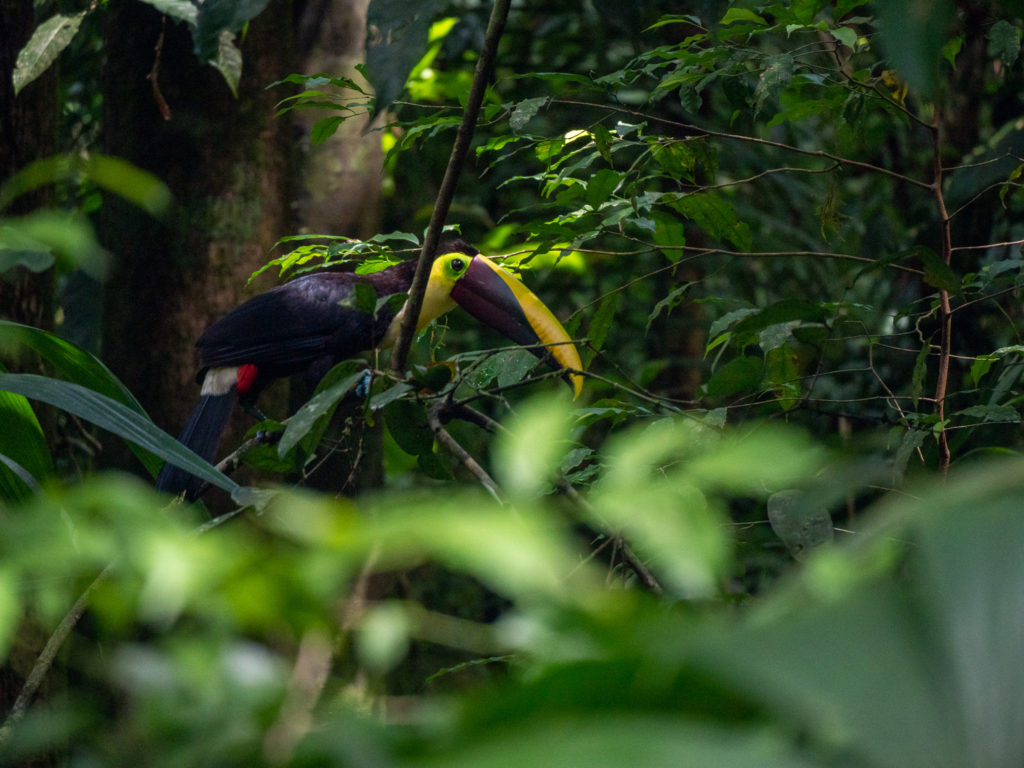
Read next:
Visiting Manuel Antonio National Park: Everything You Need To Know
Do you need a guide for Manuel Antonio National Park?
The Ultimate Monteverde Itinerary: 34 Best Things To Do
Road-tripping Costa Rica in a 4×4 Camper Car with Nomad America
